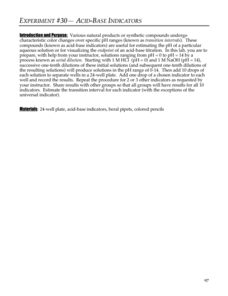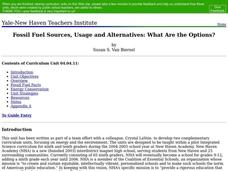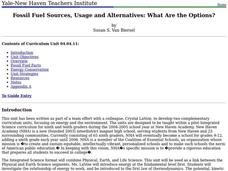DiscoverE
Nanosolutions
There are a billion reasons to use the resource! Well, not quite. A demonstration using food color and water shows scholars the meaning of nano. An iterative process results in diluting the concentration of food coloring by one tenth...
Pingry School
Acid-Base Indicators
Acid-base indicators are an essential part of any chemistry classroom. Individuals explore the color-changing feature of the important indicators in a vibrant hands-on activity. Using serial dilution, learners create solutions ranging...
Curated OER
Fossil Fuel Sources, Usage and Alternatives: What Are the Options?
Students examine the relationship between energy and the environment. In groups, they participate in experiments to discover the law of thermodynamics and the differences between potential, kinetic and mechanical forms of energy. They...
Curated OER
The Eggonaut
Students build a rocket. In this hands-on rocket activity, students work with classmates to create a rocket out of a 2-liter bottle that will protect a raw egg. The goal is to be the team with the rocket which spent the longest time...
Curated OER
Fossil Fuel Sources, Usage and Alternatives: What are the Options?
Students identify the different sources of fossil fuels. In this environmental science lesson plan, students research about how these impact our environment. They explore renewable energy sources that could replace fossil fuels.
Curated OER
Temperature Effects on Solubility
Students determine the solubility of salt in water at three different temperatures and graph the results. They use the following skills: observing, inferring, and graphing.
Curated OER
Conversions
In this measurements worksheet, students review how metric conversions work and the prefixes associated with the conversions. Then students complete 27 problems, 1 short answer, 14 matching, and 7 fill in the blank questions.






